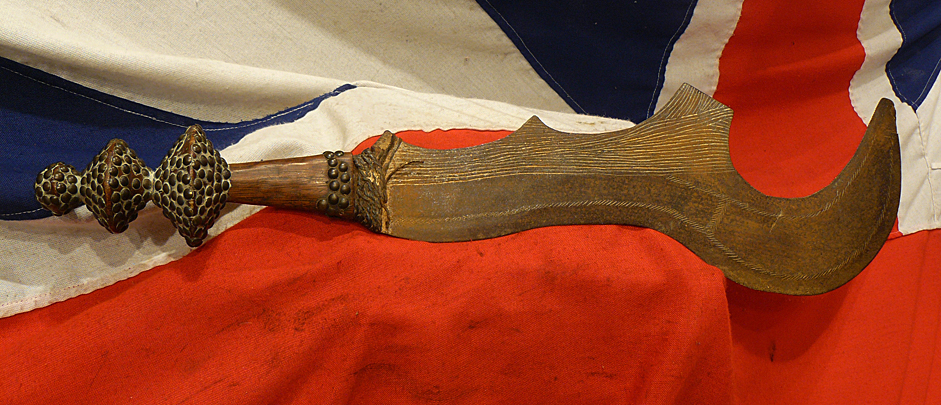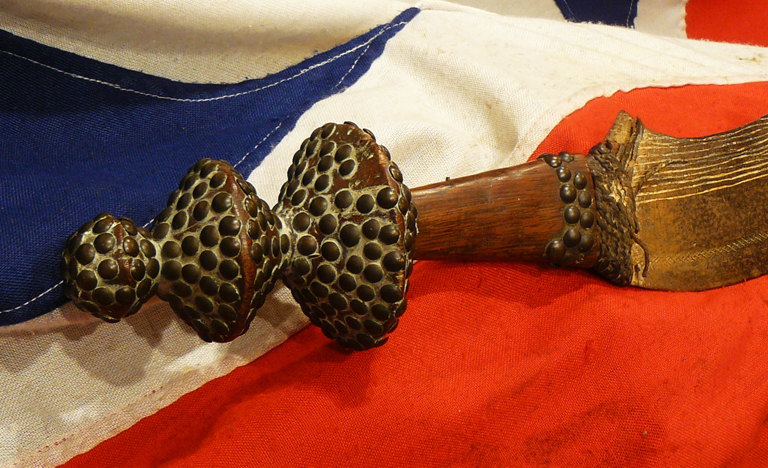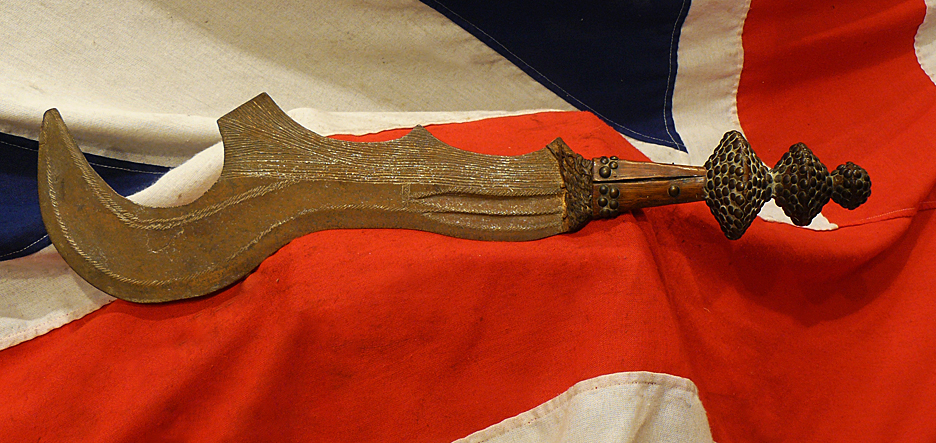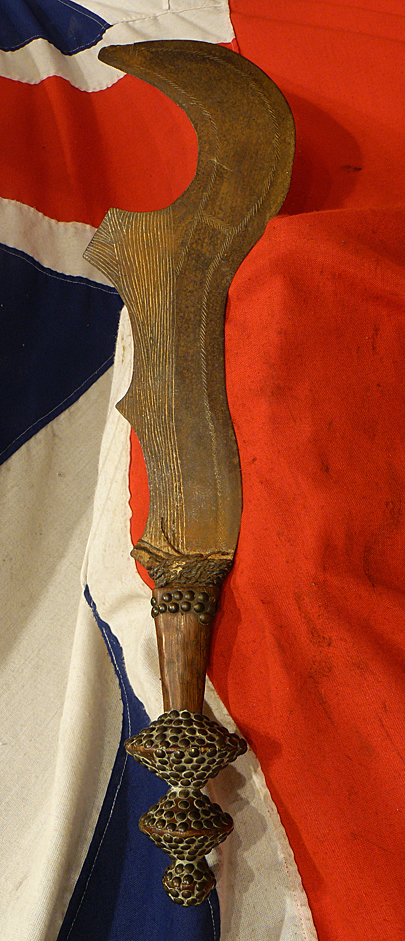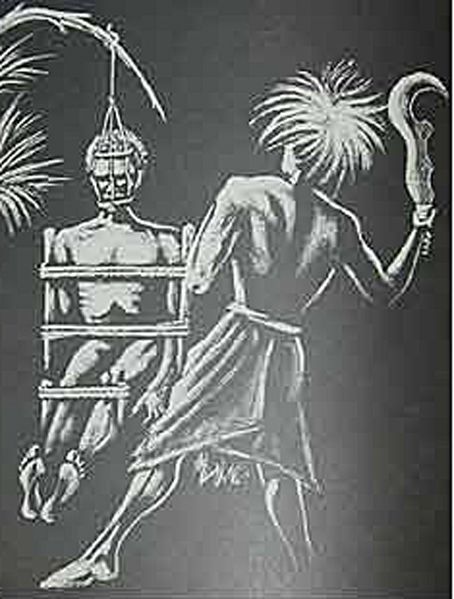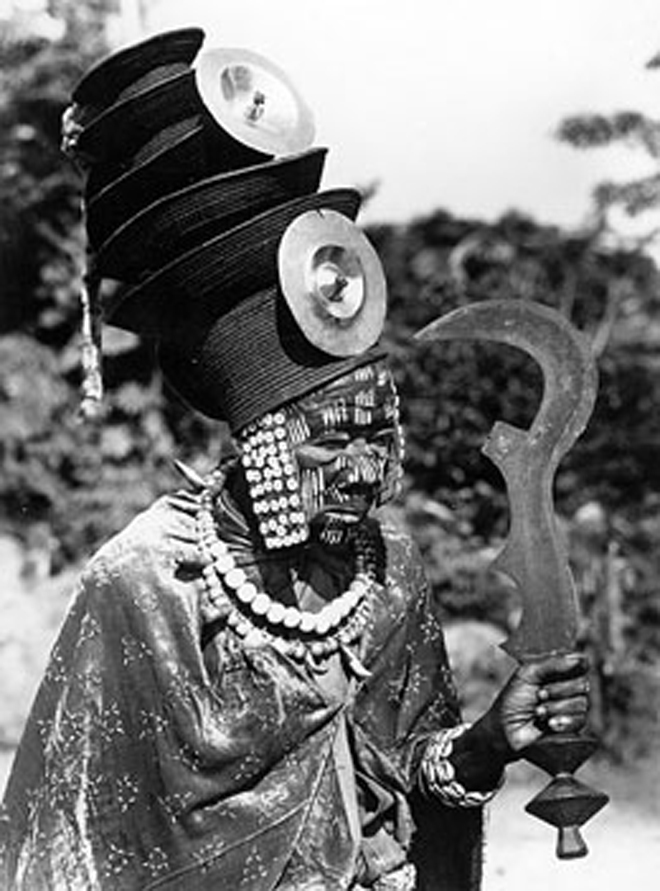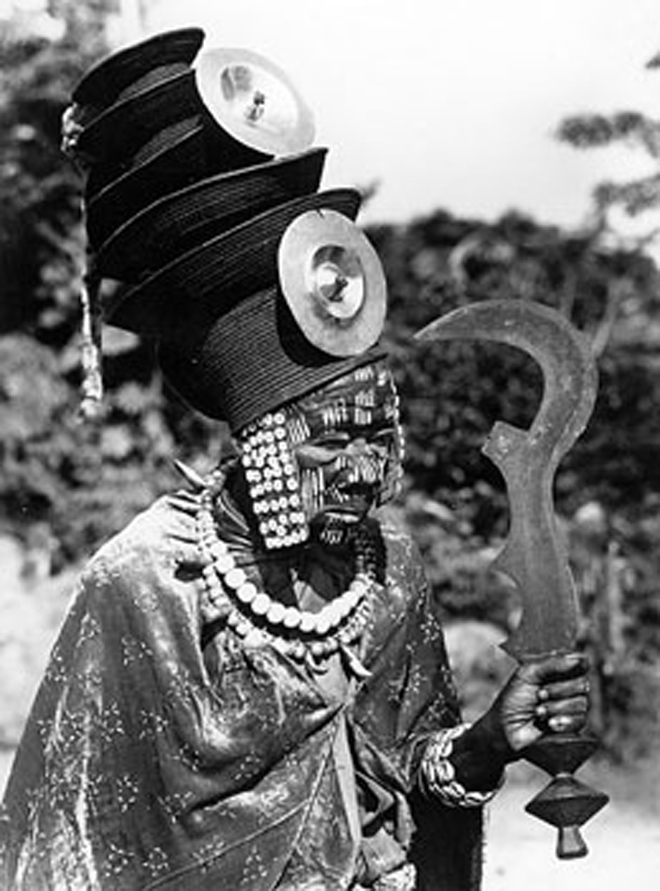A Rare, Museum Piece, An Original, Antique, Very Impressive, & Iconic Bantu People Ngombe Doko Tribal Chiefs Power & Status Sword, Especially Used for Executions. An Ngulu. Also Called an Ngol, an Ngwolo, an M'Bolo, or, a Gulu By Connected Tribes
A rare museum piece due to its originality {not, as is most frequently seen these days, an old tourist piece} and it is in truly exceptional condition.
This large execution short sword was a symbol of power - and was a "ceremonial sword for tribal chiefs". With its indigenous names of an Ngulu, an Ngol, an Ngwolo, a M'Bolo, & a Gulu
The drawings in the gallery show the use of these Ngulu execution and power swords at various executions. The back side of the blade was used as a machete for cutting. It was believed a person remained "aware" for some time after decapitation. As a result, the deceased final sensual experience was flying through the air to meet his or her ancestors. Executions were not judicial events meant for murders or criminals. They were events carried out for ceremonial purposes and the chosen were invariably slaves.
Werner Fisher & Manfred A. Zirngibl wrote in their book Afrikanische Waffen: This design was selected for cult and execution. A knife or short sword was created which symbolised the inexorableness on the judgment and execution. This execution sword became a symbol of power and, in a few variations became a ceremonial sword for tribal chieftains.
At executions, the condemned man was tied to the ground with ropes and poles. His head was fastened with leather straps to a bent tree branch. In this way it was ensured that the man's neck would remain stretched. After the decapitation, the head would be automatically catapulted far away and his body left behind. Used by the Bantu peoples (including the Ngombe, Doko, Ngala, etc.) of the Congo Basin. The Ngulu beheading was forbidden by the Belgians during the Free State of Congo period (1885-1908). It resembles the Khopesh, the sickle-sword of ancient Egypt, except that it has a much more massive blade, made of iron, with sometimes a non-cutting back and a semi-circular concavity.
The blade hadn't been cleaned or polished for well over 100 years, so we fully conserved the whole sword. We removed {by hand} all the red oxidised blade surface colour to return it to its original, hand crafted steel colouring, revealing all it original age patina, and some not inconsiderable hand engraving, and then conserved and polished the complete original carved wooden hilt with brass studwork
Code: 22327
995.00 GBP

